Biotechnology
The black gold of mushrooms
Empa researchers have succeeded in extracting the pigment melanin in large quantities from a fungus. The gigantic Armillaria fungus in the service of science is one of the largest and oldest living organisms in the world. Potential applications for the "black gold" range from wood preservatives to the construction of water filters and historic musical instruments.
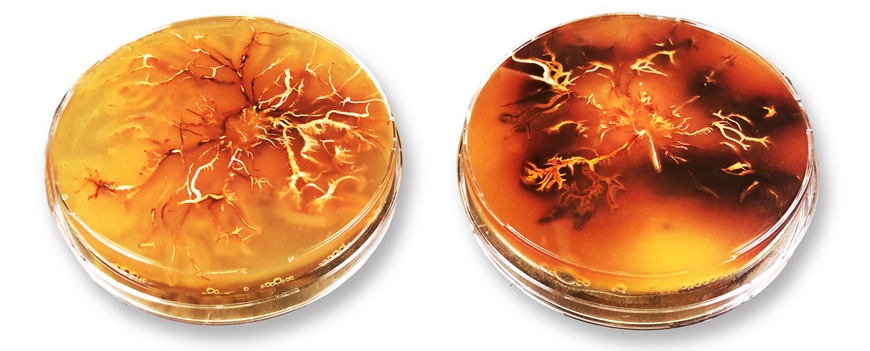
Its properties are astonishing and its applications manifold: The pigment melanin, which, for instance, protects human skin from harmful UV light (and gives us a summer tan), is a veritable treasure trove for new materials and technologies. Although the miracle substance occurs naturally, the complex biopolymer can only be produced artificially at an industrial scale through expensive and complex processes, during which some of the compound's properties are lost. To date processes for extracting natural melanin from microorganisms only have low yields. It is therefore not surprising that the substance is many times more expensive than gold. Empa researchers have now developed a method to produce the "black gold" in a simple and highly scalable process. "Melanin is extremely stable when exposed to environmental influences and is interesting not only as a pigment, but also far beyond for the development of innovative composite materials," says Empa researcher Francis Schwarze from Empa's "Cellulose & Wood Materials" lab.
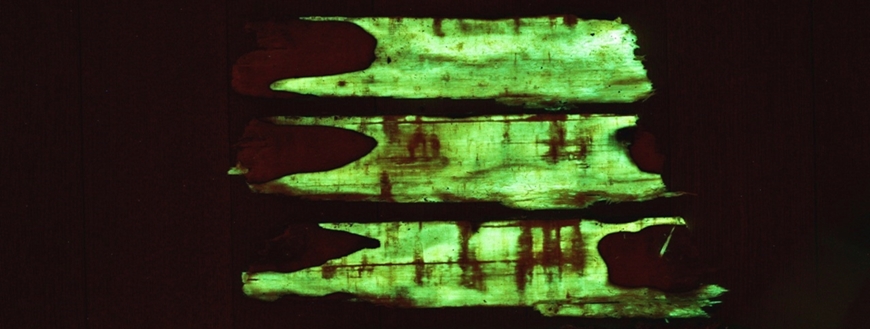
In their quest for simpler, cheaper processes for the production of natural melanin in large quantities, Schwarze and his team came across a fungus, which is actually a common saprophytic fungus that grows in the forest: Armillaria cepistipes. Its amazing metabolism enables the fungus to bind heavy metals, make wood glow in the dark – and produce melanin on a massive scale. "We have selected a promising strain of A. cepistipes, that allows us to produce around 1,000 times more melanin than with other fungi" says Schwarze. The trick: A. cepistipes is cultivated in a nutrient fluid, and, in the presence of a precursor, tyrosine, the fungus releases melanin into the environment. "In this way we have developed a sustainable production method, which no longer requires time-consuming extraction steps used in previous microbiological processes," explains the Empa researcher. In three months A. cepistipes produces around 20 grams of melanin.
The scalable and sustainable production of melanin now enables Empa researchers to advance projects to develop innovative materials for a range of industrial applications. These include, for example, a system for water purification: Since melanin is able to bind heavy metals, it can be used to develop new types of water filters. "We have integrated melanin into artificial polymers such as polyurethane," explains Empa researcher Anh Tran-Ly. Using electrospinning, the polymer mixture was spun into ultra-fine fibers to form membranes. The Empa team found that these melanin-based composite membranescan remove up to 94 percent of lead from polluted water.
As black as ebony

In nature, fungi use melanin to protect themselves against other organisms that compete for nutrients and space in the environment. With the new technology, the pigment can now also be used to protect much larger communities from human influence: Melanin can be used to conserve tropical forests where highly priced and much sought after ebony grows.
Tropical ebony wood is particularly precious because of its unique dark color. A sustainable method that upgrades native Norway spruce wood to a visually equally attractive product allows vulnerable tropical forests to breathe a sigh of relief. "When spruce wood is impregnated with a melanin suspension, a deep dark wood can be produced that is comparable to ebony," says Empa researcher Tine Kalac.
Melanin, a pigment against environmental stress

Helper from the fungal trick box
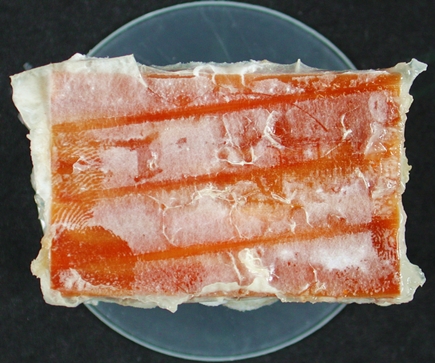
To enable the black melanin to penetrate the wood, the researchers used another "helper" from their fungal trick box: Physisporinus vitreus – the white rot fungus – is also a saprophyte that colonizes wood, thereby enhancing wood permeability. It grows sponge-like on trees and preferentially decomposes lignin within wood.
With the help of a method developed at Empa, the wood is now first treated with the white rot fungus for six weeks to allow the melanin suspension to penetrate deeply into the wood , without altering the wood's stability.
Armillaria: A most gigantic fungus

Much more impressive, however, is his network of black strands, which grows over the wood and in the soil. Mushroom threads join together to form thick bundles several meters long, surrounded by a black protective layer containing melanin, and colonize new habitats and food sources. These so-called rhizomorphs can also penetrate tree roots as parasites, ascend the trunk and decompose their host from within.
With a size of several square kilometers, the largest living organism in the world, an approximately 2400-year-old Armillaria network, is expanding in the US state of Oregon. In Switzerland, the largest fungus in Europe is loacted at the Ofen Pass. This Armillaria covers an area of 50 soccer fields. It owes its age of around 1000 years to the pigment melanin, which protects the black fungal threads from environmental damage and competitors.
Serpentino – the little snake among instruments
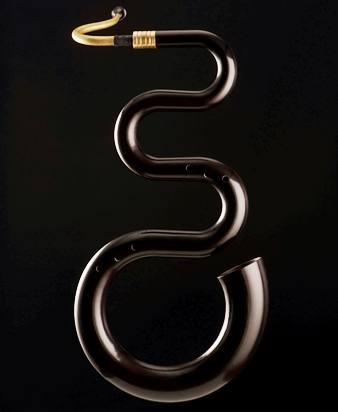
Since Armillaria fungi use melanin as a weapon against competitors, it is only logical to use melanin to protect wood from fungi. In order to develop a melanin-based wood preservative, Empa researchers are participating in a recently launched interdisciplinary project supported by Innosuisse, the Swiss Innovation Agency. The goal is to reconstruct a historical wind instrument, the Serpentino (in English: small snake).
Together with the University of Applied Sciences and Arts Northwestern Switzerland and the Basel Historical Museum, the industrial partner in the project is the company SBerger Serpents in Le Bois (JU), which is responsible for the practical implementation of the research project – the reconstruction of the instrument. Company founder Stephan Berger is enthusiastic about the rebirth of this rare instrument: "The Serpentino was used over 400 years ago and was the godfather of modern instruments such as the saxophone and the tuba," he explains. Although it is a technical challenge for musicians to master the instrument, the sound is incomparable, enthuses Berger. "The Serpentino creates sounds that are rich in overtones and deeply touching". Originally, the wind instrument was used in churches to support singing because it covers the registers of the human voice and can thus "carry" a choir, the passionate instrument maker explains.

Although today's trend towards historically informed performances means that the Serpentino is in great demand, Berger is unable to supply its customers with instruments: The peculiarly curved original instruments have become rare. Because the snake-shaped instrument made of walnut wood not only creates an incomparable sound – there is also a war raging inside the "little snake": Condensation from the musicians' breath creates a humid microclimate that provides excellent conditions for the growth of all kinds of microorganisms. Thus the conditions for bacteria and fungi are favorable for the decomposition of the centuries-old instruments gradually destroying the last original specimens.
The research project's faithful serpentino replicas are to be protected from this damage. This is where Empa's melanin comes in: "If we can use a melanin-based wood preservative, not only the newly built serpentinos can be protected against decay," says Berger. Other woodwind instruments built today using domestic, less resistant woods could also benefit from such an environmentally friendly wood treatment. Thus, the collaboration with the Empa team is exciting in more ways than one.
Prof. Dr. Francis Schwarze
Cellulose & Wood Materials
Phone +41 58 765 72 47
Stephan Berger /
Erna Suter
Serpent maker
Phone +41 32 961 11 88
sberger@serpents.ch
AN Tran‑Ly, C Reyes, FWMR Schwarze,· J Ribera; Microbial production of melanin and its various applications; World Journal of Microbiology and Biotechnology (2020); https://doi.org/10.1007/s11274-020-02941-z
AN Tran-Ly, J Ribera, FWMR Schwarze, M Brunelli, G Fortunato; Fungal melanin-based electrospun membranes for heavy metal detoxification of water; Sustainable Materials and Technologies (2020); https://doi.org/10.1016/j.susmat.2019.e00146
J Ribera, G Panzarasa, A Stobbe, A Osypova, P Rupper, D Klose, FWMR Schwarze; Scalable Biosynthesis of Melanin by the Basidiomycete Armillaria cepistipes; J Agric Food Chem (2019); https://doi.org/10.1021/acs.jafc.8b05071
Project partner SBerger Serpents: https://serpents.ch/
The sound of the serpent: https://www.youtube.com/watch?v=4XyMP3nvpEQ
| Audio |
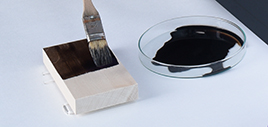
Empa researcher Anh Tran-Ly explains how melanin can be produced cheaply and where the potential applications for this substance lie: Radio program on RTS, CQFD, February 24, 2021 (in French)

Materials research
Voltage from the parquet
Researchers at Empa and ETH Zurich have made wood flexible and turned it into a micro-generator. When it is loaded, electrical voltage is generated. In this way, the wood can serve as a bio-sensor – or generate usable energy. (Image: istock).
>>>>
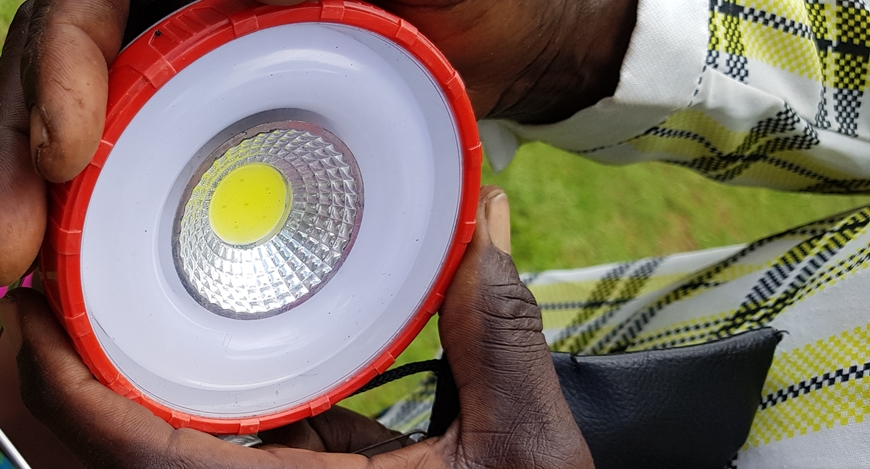
Developing countries
Tailor-made power grids
In her PhD thesis, Empa researcher Crisitina Dominguez is developing a computer model, which can be used to plan electricity grids in developing countries. To collect data, she travelled to Kenya to get an idea of how people live without electricity and what developments access to the power grid can trigger. (Image: Empa / ETH).
>>>>

Sustainability
Eco-energy without limits?
Even a sustainable circular economy doesn't run without energy. Solar panels and wind farms, tidal and geothermal power plants: They all divert energy from energy fluxes that had remained untapped since time immemorial. The question is therefore: What part of these energy fluxes can mankind use for its own purposes without damaging the Earth's energy system? Empa researchers have developed an approach to estimate this. (Image: NASA).
>>>>






